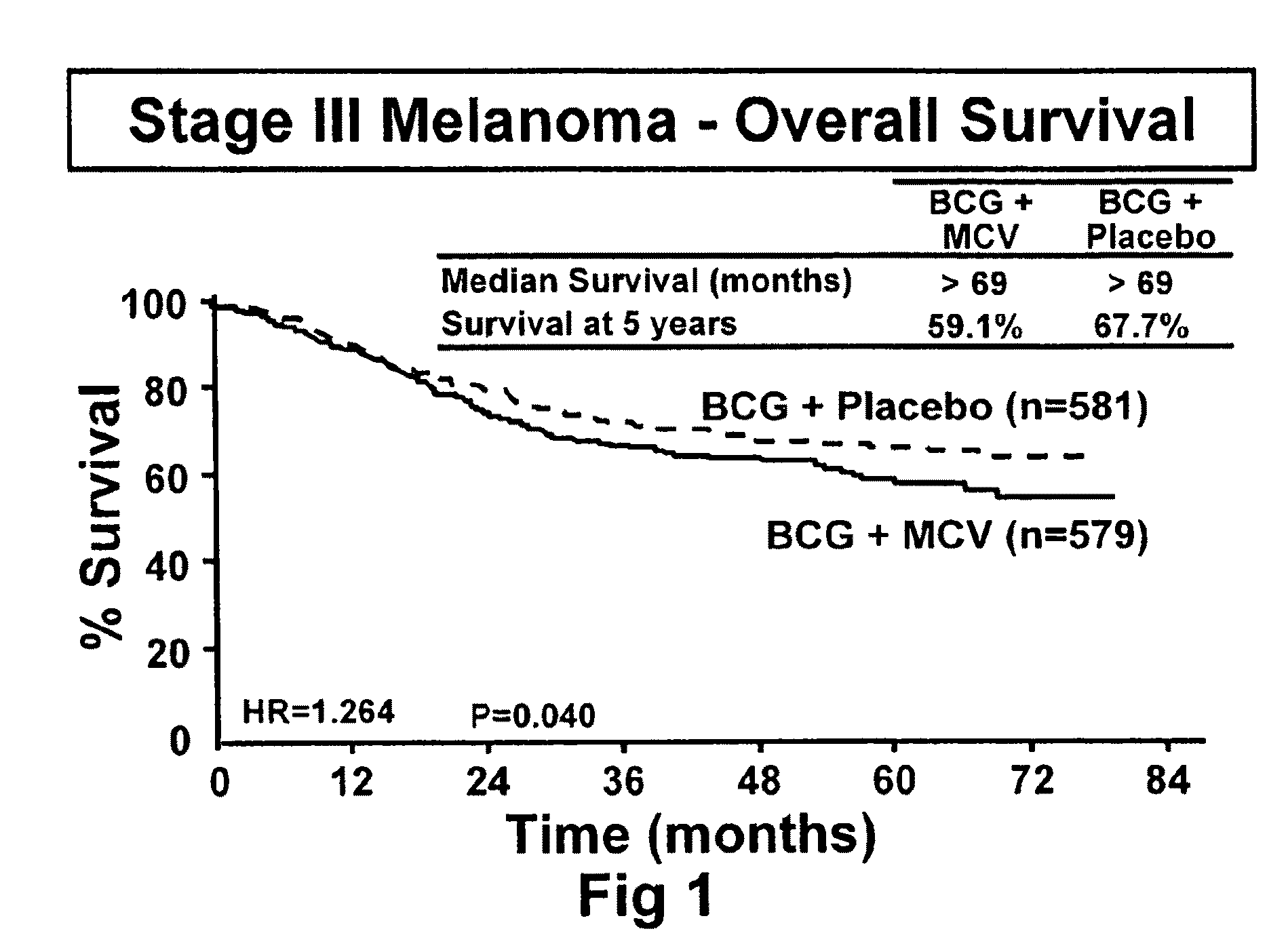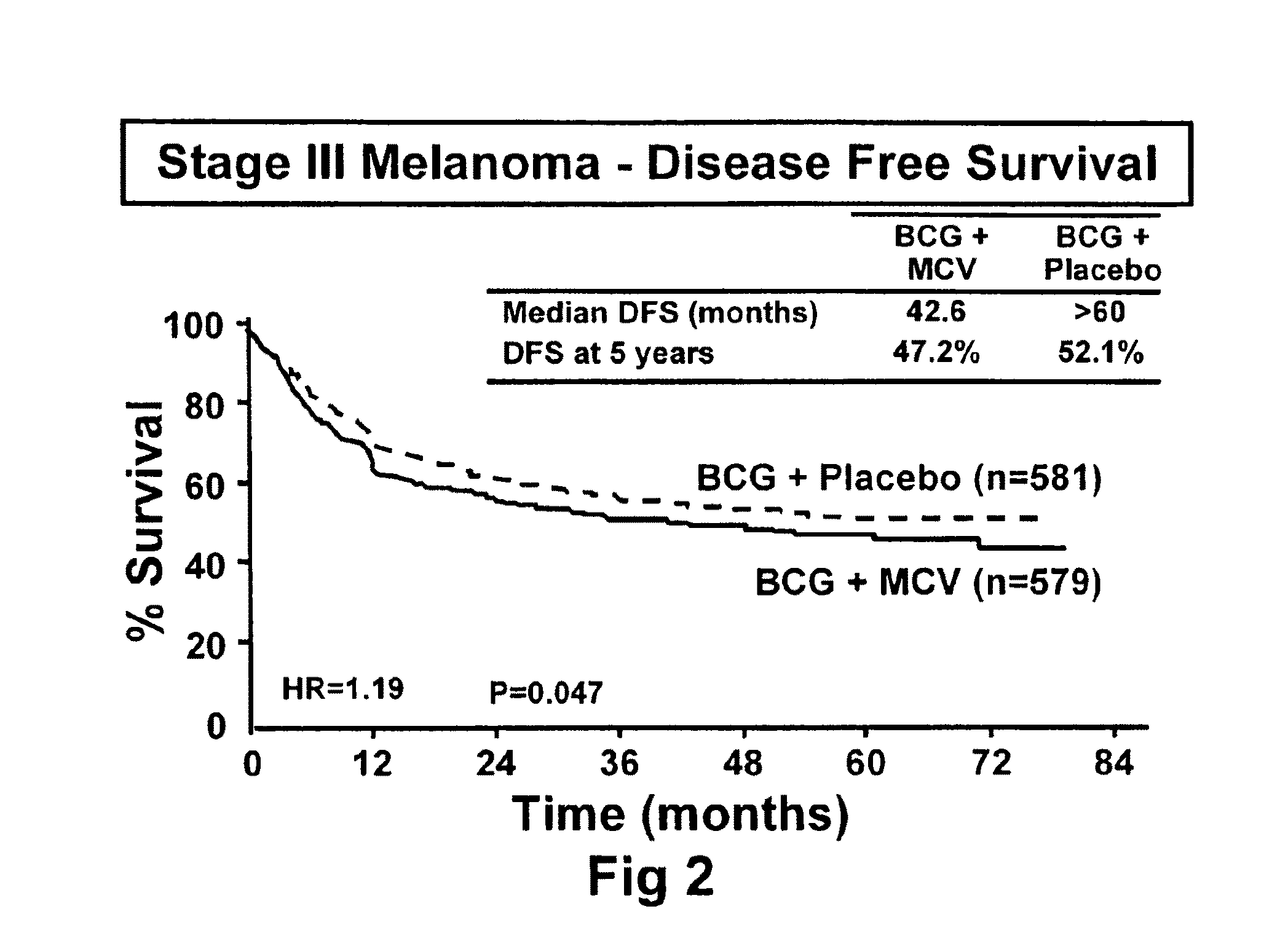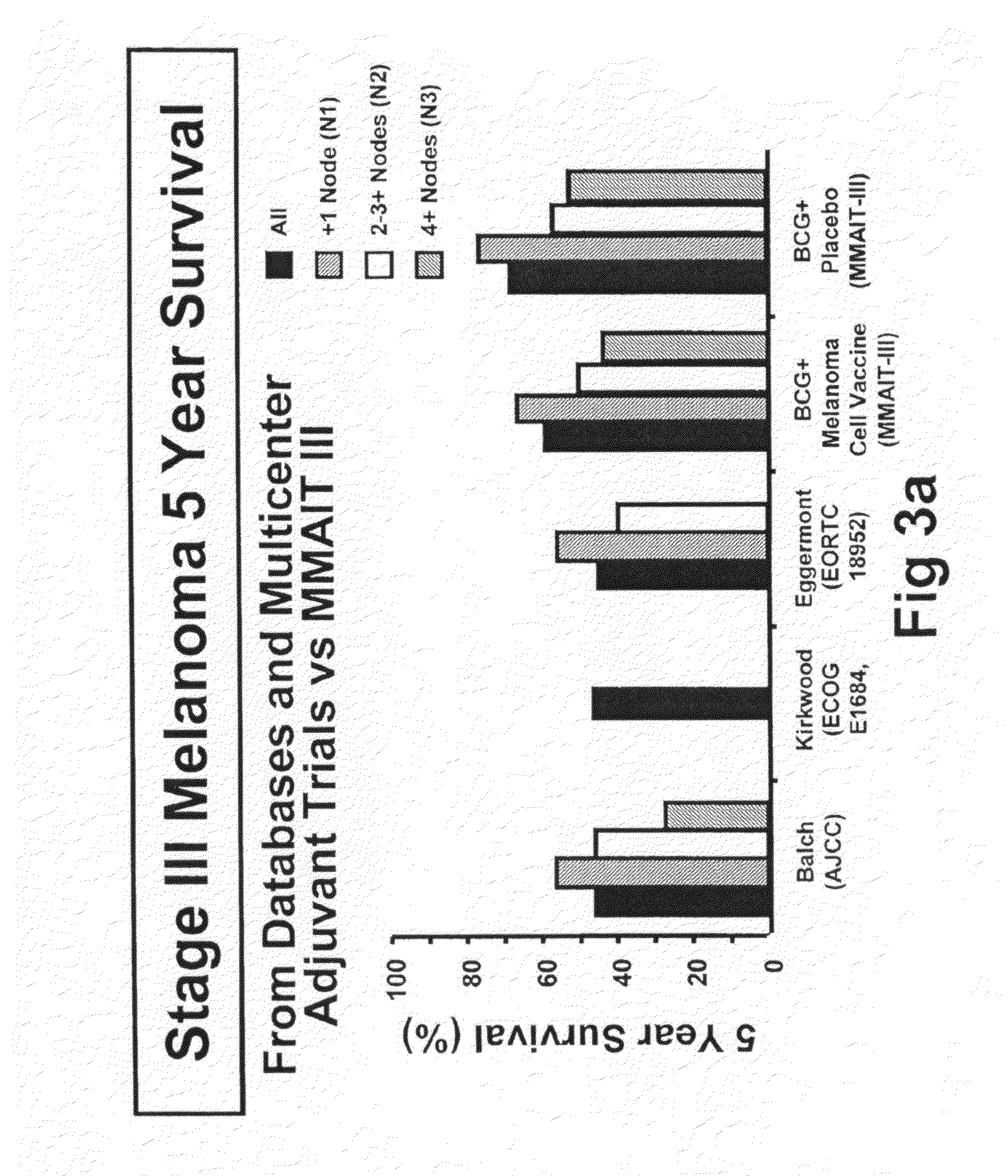Mycobacterial immunotherapy for cancer treatment
a technology of immunotherapy and mycobacteria, applied in the field of cancer treatment, can solve the problems of ineffective immunotherapy with attenuated bacteria, limited success, and a variety of approaches, and achieve the effect of significant effective cancer treatment and safe and effective methods of treating and/or preventing cancer
- Summary
- Abstract
- Description
- Claims
- Application Information
AI Technical Summary
Benefits of technology
Problems solved by technology
Method used
Image
Examples
example 1
Clinical Trial Design and Protocols
[0092]The initial objective of the clinical trials was to determine whether adjuvant MCV plus BCG or BCG plus placebo will effectively prolong overall and disease-free survival in Stage III or Stage IV melanoma patients rendered NED (no evidence of disease) after surgical resection.
[0093]Trial Design:
[0094]The trial was a Phase III, randomized, multicenter, trial of immunotherapy with MCV plus BCG versus BCG alone as a post-surgical treatment for patients with Stage III or IV melanoma. Patients with Stage IV melanoma had visceral metastases or soft tissue and nodal metastases prior to surgical therapy. All patients were randomized to receive either MCV plus BCG or BCG plus placebo over a period of three years. Only the first two doses of each agent was administered with BCG. Patients were accrued at a number of national and international sites.
[0095]Treatments:
[0096]BCG: Care should be taken by those personnel handling BCG to avoid contact with the...
example 2
Evaluation of Clinical Trial Results
[0116]The primary endpoint for the trial was overall survival of subjects who were administered to the various treatment regimens. However, additional end point included (1) disease-free survival, (2) the clinical outcomes of immunological responders and non-responders, (3) TA-90 immune complex and multi-marker RT / PCR assays to identify patients at high risk for recurrence and (4) quality of life parameters. Safety is evaluated in the study by review of adverse events, clinical laboratory tests, vital signs, physical examinations and nursing assessments.
[0117]MCV Associated Side Effects
[0118]All systemic symptoms observed were mild to moderate in intensity and transient. Patients receiving MCV have experienced transient low-grade fever (27%), chills (24%), arthralgias (0.5%), myalgias (36%), headache (13%). The most frequent side effect is fatigue, which occurs n 74% of patients transiently for 24-36 hours following administration. Frequently occu...
example 3
UTAA Sero-Conversion
[0125]Following treatment of Stage III melanoma patients with either MCV plus BCG or BCG plus placebo blood was drawn periodically for the first 6 months to determine the TA90 specific IgG and IgM antibody titers. In each case, antibody titers were assessed by ELISA as described in Habal et al., 2001. Patients were categorized as responders or non-responders based on their TA90 IgM or IgG titers. For the purposes of analysis, subjects with TA 90 specific IgG titers of greater than 1:400 and TA90 specific IgM titers of greater that 1:800 were categorized as responders. In agreement with the results from over-all and disease free survival studies, a larger percentage of patients receiving BCG alone were categorized as responders based on IgG and IgM serum titers. At the three month time point ˜50% of BCG alone patients had a greater then 1:400 TA90 IgG titer. By six months ˜70% of the BCG group were responders (i.e. had IgG titer of greater then 400:1). These data ...
PUM
| Property | Measurement | Unit |
|---|---|---|
| diameter | aaaaa | aaaaa |
| diameter | aaaaa | aaaaa |
| volume | aaaaa | aaaaa |
Abstract
Description
Claims
Application Information
 Login to View More
Login to View More - R&D
- Intellectual Property
- Life Sciences
- Materials
- Tech Scout
- Unparalleled Data Quality
- Higher Quality Content
- 60% Fewer Hallucinations
Browse by: Latest US Patents, China's latest patents, Technical Efficacy Thesaurus, Application Domain, Technology Topic, Popular Technical Reports.
© 2025 PatSnap. All rights reserved.Legal|Privacy policy|Modern Slavery Act Transparency Statement|Sitemap|About US| Contact US: help@patsnap.com



